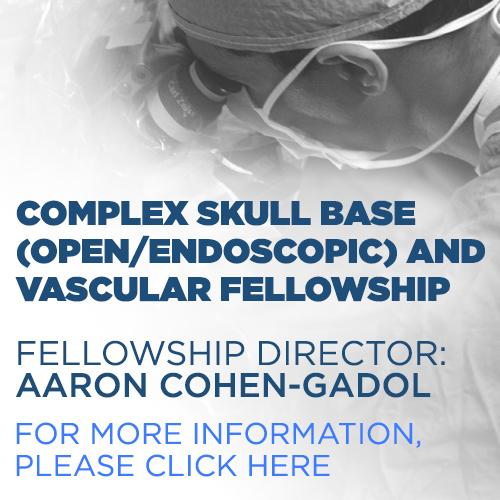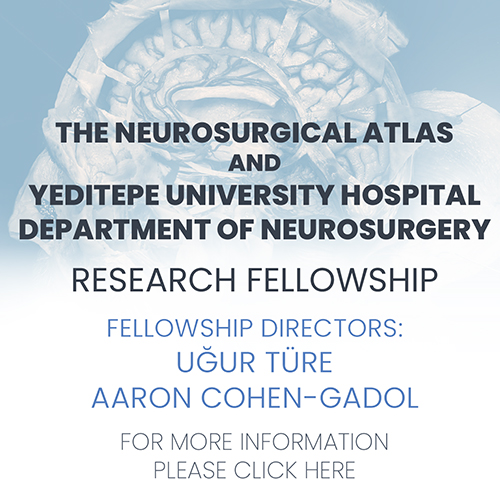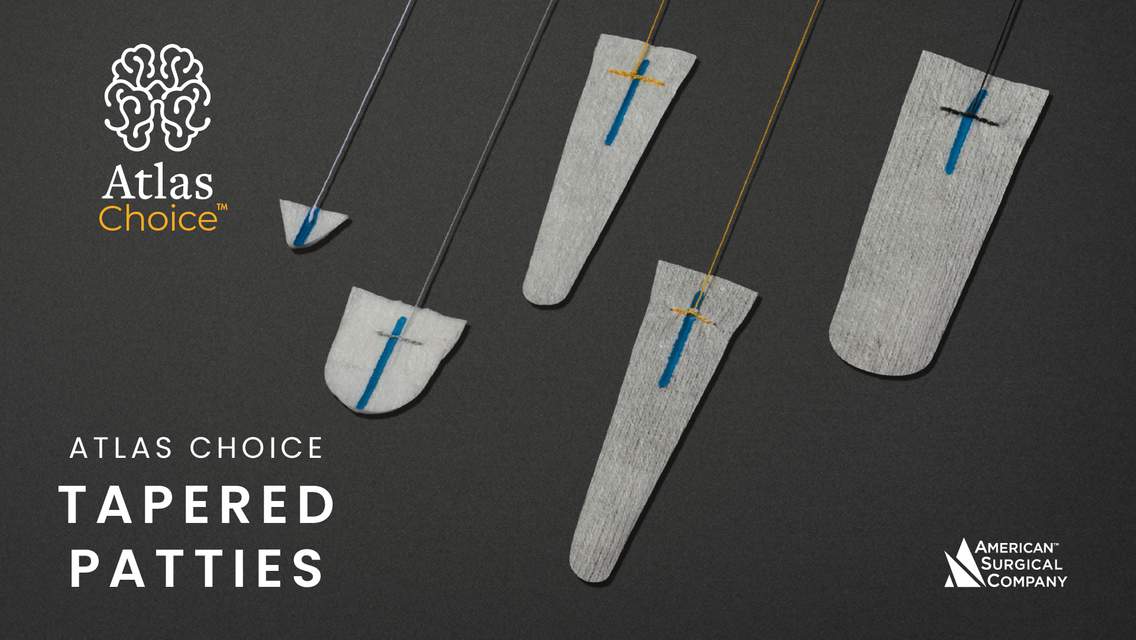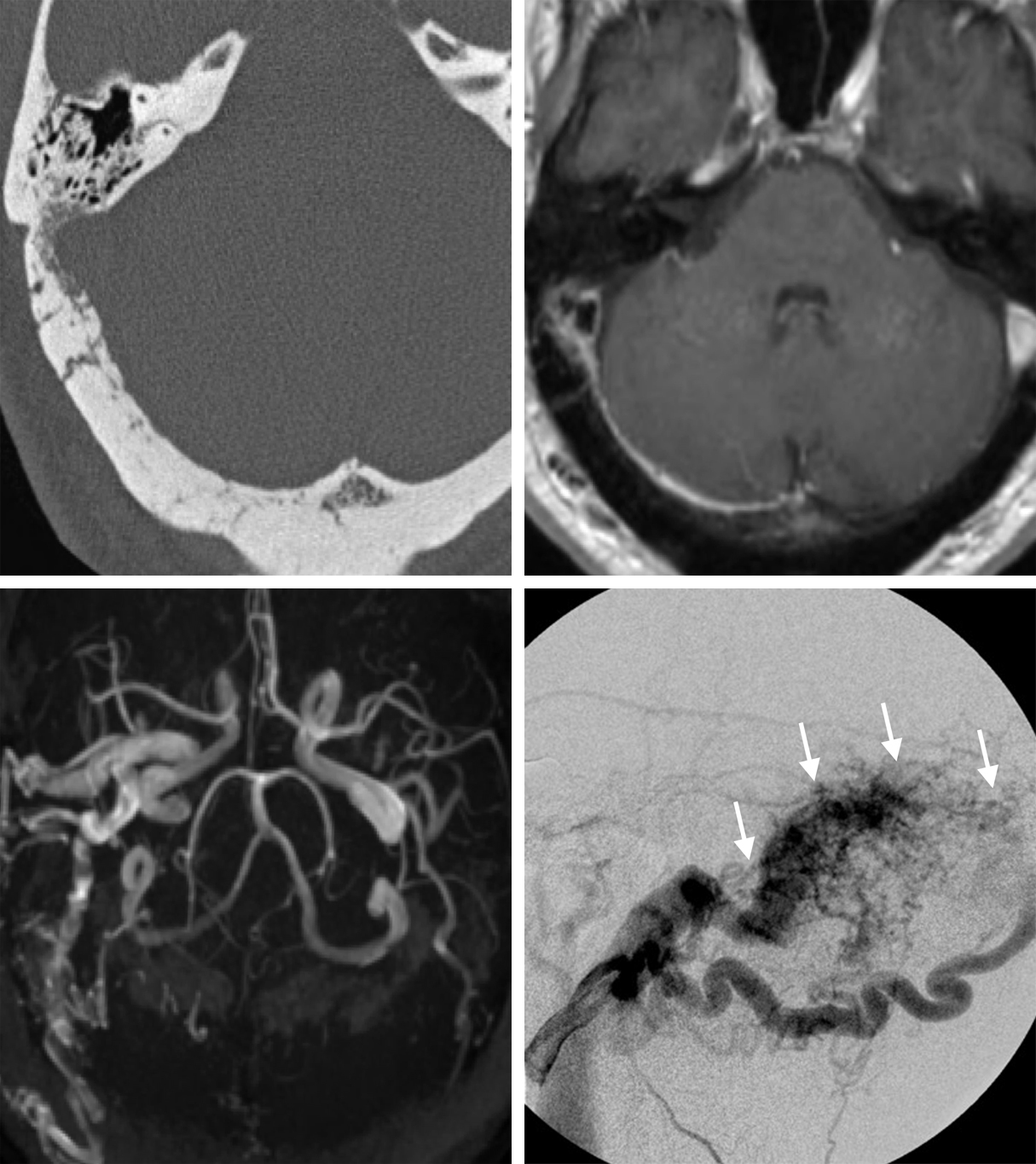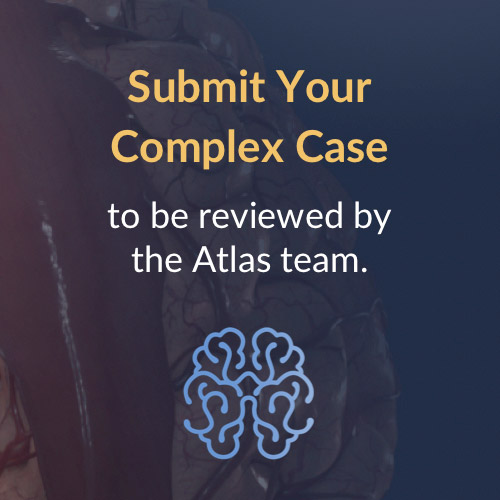Arteriovenous Fistula
Overview
Arteriovenous fistulas (AVFs) are direct pathologic arteriovenous shunts representing 10% to 15% of all cerebrovascular malformations with arteriovenous (AV) shunting. The prototypical AVF is an acquired lesion between transosseous-extracranial and/or meningeal arteries into the wall of a thrombosed dural venous sinus compromising a dural AVF (dAVF) and resulting in hypertensive venous congestion and venopathy; however, pathologic AV fistulous connections may exist along any dural margin, sinus, or venous tributary.
dAVFs are distinguished from pial-parenchymal arteriovenous malformations (AVMs) by the predominance of dural arterial supply and the absence of a parenchymal nidus; however, AVMs may have pial or dural fistulous components. The majority of dAVFs present in adulthood and are most commonly located at the transverse-sigmoid sinus wall. Clinical presentation and imaging findings are highly variable depending on anatomic site, degree of AV shunting, and venous reflux.
Transverse-sigmoid sinus dAVFs typically present with pulsatile tinnitus. dAVFs may present with encephalopathic symptoms secondary to venous hypertension, ischemia, and/or thrombosis. dAVFs with deep/inferior drainage to the petrosal sinuses and perimedullary venous plexus may result in progressive myelopathy and central respiratory failure.
Congenital AVFs, including dAVF, vein of Galen aneurysmal malformations (VGAMs) of the subarachnoid space, and nongalenic pial AVF (pAVF) encountered in the pediatric population, have unique developmental and pathophysiologic characteristics and tend to be very rare. Like AVMs, underlying parenchymal abnormalities have been hypothesized to result from vascular steal phenomenon and venous congestion. Infants with a large congenital dAVF, VGAM, or nongalenic pAVFs can present with congestive heart failure (early) and developmental delay or increased head circumference (late).
Carotid cavernous fistulas (CCFs), included in this category, represent pathologic shunts between the cavernous internal carotid artery (ICA) and the cavernous sinus, resulting in unique symptomology, typically with pulsatile exophthalmos and neuropathies of cranial nerves III, IV, and VI.
Dural Arteriovenous Fistula
Figure 1: A 63-year-old man with tinnitus and headache. (Top Left) Axial CT image demonstrating focal permeative osseous lucency adjacent to the right transverse-sigmoid sinus junction. (Top Right) Axial T1-weighted postcontrast image demonstrating abnormally increased dural enhancement adjacent to the right transverse-sigmoid sinus junction. (Bottom Left) MRA MIP image revealing abnormal flow-related enhancement of numerous transosseous vessels converging at the right transverse-sigmoid sinus junction wall. (Bottom right) DSA confirming a right transverse-sigmoid sinus junction dAVF, Cognard type I (white arrows), with arterial supply primarily by branches of the distal right occipital artery, minor contribution by the posterior branch of the right middle meningeal artery, and antegrade venous drainage directly from the right transverse-sigmoid sinus junction.
Please note the relevant information for patients suffering from an arteriovenous fistula is presented in another chapter. Please click here for patient-related content.
Imaging
- General features
- Intracranial dAVFs present with a range of symptomatology that correlates with both anatomic location and regional venous drainage pattern (Cognard classification). Cross-sectional imaging features are often subtle, missed, or misinterpreted. dAVFs can involve any dural venous sinus, most commonly the transverse-sigmoid sinus junction (35%–40%) and less commonly the superior sagittal sinus and superior petrosal sinus.
- CT
- Nonenhanced computed tomography (NECT)
- Commonly normal, unremarkable study
- Hyperdense dural sinus (thrombosis) may be identified
- Dilated transosseous calvarial vascular channels with associated permeative, erosive changes can be seen in some cases, generally long-standing lesions
- Enlargement of the foramen spinosum (hypertrophy of the transmitted middle meningeal artery)
- Sensitive for parenchymal and subarachnoid hemorrhage (SAH) in acute rupture of dAVF (more common than subdural hemorrhage) or flow-related aneurysm (rare)
- In contrast to pAVMs, which typically demonstrate parenchymal hematomas and/or intraventricular hemorrhage (occasionally-to-rarely SAH)
- Relatively sensitive for parenchymal ischemia and edema, although evaluation is limited in the posterior fossa, as is the case in other disease entities
- Nonenhanced computed tomography (NECT)
- CT angiography
- Serpiginous, dilated, and hypertrophied arterial feeders closely apposed to dural surfaces and dural venous sinuses
- Dilated draining veins and varices (common), flow-related aneurysms (rare)
- Dural sinus stenosis and/or thrombosis
- Dilated, tortuous cortical draining veins in lesions of a higher Cognard grade
- Pitfalls
- Because there is absence of a nidus, direct visualization of isodense to hyperdense serpiginous structures related to hypertrophied feeding arteries and draining veins are likely to be appreciated only in retrospect (if at all)
- If there is evidence of rupture and hemorrhage, proceed to contrast-enhanced study
- MRI
- General features
- Absence of a parenchymal nidus tangle of serpiginous flow voids
- High-flow fistulas may demonstrate anomalous flow-related phenomena
- Increased number of flow voids
- Increased size of flow voids
- Abnormal locations related to venous congestion
- Prominent transosseous/meningeal vessels
- Prominent cortical veins
- Excellent sensitivity and specificity for detection and staging of blood products related to associated hemorrhage
- T2, FLAIR
- May reveal parenchymal hyperintensity related to gliosis and/or venous congestion
- Seen in higher-grade lesions due to abnormal retrograde leptomeningeal/cortical venous reflux (can be striking)
- T2*, GRE, SWI
- Signal loss (blooming) of thrombosed dural sinuses
- DWI
- Typically normal
- May reveal venous infarct/ischemia if present
- Postcontrast imaging
- Variable dural sinus wall contrast enhancement
- Abnormally increased leptomeningeal enhancement
- MRA
- MRA/MRV should generally be considered complementary to conventional MRI
- 3D phase-contrast MRA with low-velocity encoding can identify AVF components
- Feeding arteries
- Flow reversal in draining veins
- Time-resolved contrast-enhanced MRA and MRV prove useful in estimating angiographic dynamics such as flow reversal in draining veins when present
- Feeding arteries are often easy to identify (because of location and dilatation)
- Draining veins can be identified by their larger caliber relative to arteries and drainage into deep or cortical veins
- Dilated, tortuous cortical draining veins in lesions of a higher Cognard grade
- MRV demonstrates occluded parent sinus and collateral flow
- Pitfalls
- Sigmoid sinus-jugular foramen pseudolesion
- Slow or asymmetric flow creates variable signal on MR sequences
- Use MRV with multiple encoding gradients to clarify
- Thrombosed dural sinus
- Congested venous collateralization drainage can mimic dAVF, without arterial shunt
- Evaluate all dural margins and pay close attention to the overlying scalp
- Limitations
- Prone to multitude of artifacts that can be both helpful and difficult to interpret
- Pulsation artifacts may be seen with dAVFs
- Pulsation artifacts become more pronounced on T1-weighted spin-echo contrast-enhanced images but not on inversion-recovery spoiled-gradient recalled-echo (IR-SPGR) contrast-enhanced images
- Generally less cost-effective, less availability
- CT is performed more easily in uncooperative and/or combative patients
- Prone to multitude of artifacts that can be both helpful and difficult to interpret
- Sigmoid sinus-jugular foramen pseudolesion
- General features
- DSA
- Angioarchitecture characterization
- Important to completely evaluate bilateral external carotid artery (ECA), ICA, and vertebrobasilar arteries to completely characterize arterial supply
- Multiple arterial feeders are typical, can have bilateral arterial supply
- Predominant supply from meningeal arteries
- Dural and transosseous branches from the ECA (commonly the occipital and middle meningeal arteries)
- Tentorial and dural branches from the ICA and vertebral arteries (VAs)
- Parasitization of pial arteries (ie, anterior cerebral artery, middle cerebral artery, posterior cerebral artery, and tributaries) with larger dAVFs
- Arterial inflow into parallel recipient venous pouch
- Venous drainage pattern
- Antegrade flow
- Retrograde flow into cortical veins and/or spinal perimedullary veins
- Staging, grading, and classification
- Cognard classification of intracranial dAVFs
- Correlates venous drainage pattern with risk of intracranial hemorrhage
- Grade 1—located in sinus wall, normal antegrade venous drainage, benign clinical course
- Grade 2A—located in main sinus, reflux into sinus but not cortical veins
- Grade 2B—reflux (retrograde drainage) into cortical veins (10%–20% hemorrhage rate)
- Grade 3—direct cortical venous drainage, no venous ectasia (40% hemorrhage)
- Grade 4—direct cortical venous drainage, venous ectasia (65% hemorrhage)
- Grade 5—spinal perimedullary venous drainage, progressive myelopathy
- Prognosis and clinical course depends on location and venous drainage pattern
- 98% of dAVFs without retrograde venous drainage have benign course
- dAVFs with retrograde venous drainage have aggressive clinical course and are more likely to result in parenchymal hemorrhage
- Correlates venous drainage pattern with risk of intracranial hemorrhage
- Cognard classification of intracranial dAVFs
Figure 2: Right superior petrosal sinus dAVF, Cognard grade IIa+b. Sagittal T1-weighted MRI (top left), CTA 3D-reconstruction image (top right), and sagittal CTA MIP reconstruction (bottom left) demonstrating focal dilated vessels (arrows). (Bottom right) DSA confirms a right superior petrosal sinus dAVF, Cognard grade IIa+b (arrows) with arterial supply from the petrosquamosal division of the right middle meningeal artery via the basal tentorial artery as well as transosseous occipital branches and to a lesser extent by temporal branches of the middle meningeal artery. Venous drainage is into a prominent venous pouch with subsequent drainage into the superior petrosal sinus, petrosal vein, and basal vein of Rosenthal.
Carotid-Cavernous Fistula
Figure 3: CCF. Axial CT images demonstrating suspected dilatation of the superior ophthalmic vein (arrows) (top left) and proptosis of the right globe (arrow) (top right). (Middle Left) Axial T1-weighted postcontrast MRI demonstrating bulging of the right cavernous sinus (white arrow). (Middle Right) Coronal T1-weighted MRI illustrating the marked, asymmetric enlargement of the right superior ophthalmic vein (black arrow). (Bottom) DSA of right ICA injection confirming a type A direct CCF (white arrows) with venous drainage primarily into the ophthalmic venous system, clival venous plexus, and contralateral inferior petrosal sinus.
Imaging
- General features
- Pathologic shunts between the cavernous ICA and the cavernous sinus
- Barrow classification based on angiographic characterization of arterial supply
- Type A—direct ICA-cavernous sinus high-flow shunt (not dAVF)
- Type B—dural ICA branches-cavernous shunt
- Type C—dural ECA-cavernous shunt
- Type D—ECA and ICA dural branches shunt to cavernous sinus
- Natural history of CCF is variable
- Spectrum: spontaneous closure to rapid symptom progression
- Direct CCF
- Has a relatively high spontaneous rate (~8%) of hemorrhage (SAH, intracranial hemorrhage, or epistaxis); subconjunctival hemorrhage is also common
- Indirect CCF
- Indicators of poor outcome include feeding vessel aneurysms and, like other dural-based AV shunts, there is increased risk of hemorrhage if retrograde cortical venous reflux develops
- Cross-sectional imaging findings (CT and MRI)
- Asymmetric subtle mass effect of the cavernous sinus
- Asymmetric early enhancement of the cavernous sinus
- Asymmetric enlargement of the ipsilateral superior ophthalmic vein
- Asymmetric ipsilateral proptosis, extraocular muscle enlargement
- Increased number of vessels (ie, flow voids) in the cavernous sinus
For more information, please see the corresponding chapter in Radiopaedia.
Contributor: Daniel Murph, MD
References
Berenstein A, Lasjaunias, P. Surgical neuroangiography. In Clinical and Interventional Aspects in Children, vol 3. Springer;1992.
Brown RD Jr, Flemming KD, Meyer FB, et al. Natural history, evaluation, and management of intracranial vascular malformations. Mayo Clin Proc 2005;80:269–281. doi.org/10.4065/80.2.269
Chaudhary MY, Sachdev VP, Cho SH, et al. Dural arteriovenous malformation of the major venous sinuses: an acquired lesion. AJNR Am J Neuroradiol 1982;3:13–19.
Chew J, Weill A, Guilbert F, et al: Arterial Onyx embolisation of intracranial dAVFs with cortical venous drainage. Can J Neurol Sci. 2009;36:168-175. doi.org/10.1017/s0317167100006521
Chung SJ, Kim JS, Kim JC, et al. Intracranial dural arteriovenous fistulas: analysis of 60 patients. Cerebrovasc Dis 2002;13:79–88. doi.org/10.1159/000047755
Cognard C, Casasco A, Toevi M, et al. Dural arteriovenous fistulas as a cause of intracranial hypertension due to impairment of cranial venous outflow. J Neurol Neurosurg Psychiatry 1998;65:308–316. doi.org/10.1136/jnnp.65.3.308
Cognard C, Gobin YP, Pierot L, et al. Cerebral dural arteriovenous fistulas: clinical and angiographic correlation with a revised classification of venous drainage. Radiology 1995;194(3):671–680. doi.org/10.1148/radiology.194.3.7862961
Davies MA, TerBrugge K, Willinsky R, et al. The validity of classification for the clinical presentation of intracranial dural arteriovenous fistulas. J Neurosurg 1996;85:830–837. doi.org/10.3171/jns.1996.85.5.0830
Farb RI, Agid R, Willinsky RA, et al: Cranial dural arteriovenous fistula: diagnosis and classification with time-resolved MR angiography at 3T. AJNR Am J Neuroradiol 2009;30:1546–1551. doi.org/10.3174/ajnr.A1646
Hashiguchi A, Mimata C, Ichimura H, et al. Venous aneurysm development associated with a dural arteriovenous fistula of the anterior cranial fossa with devastating hemorrhage–case report. Neurol Med Chir (Tokyo) 2007;47:70–73. doi.org/10.2176/nmc.47.70
Hasumi T, Fukushima T, Haisa T, et al. Focal dural arteriovenous fistula (dAVF) presenting with progressive cognitive impairment including amnesia and alexia. Intern Med 2007;46:1317–1320. doi.org/10.2169/internalmedicine.46.0262
Hetts SW, Moftakhar P, Maluste N, et al. Pediatric intracranial dural arteriovenous fistulas: age-related differences in clinical features, angioarchitecture, and treatment outcomes. J Neurosurg Pediatr 2016;18:602–610. doi.org/10.3171/2016.5.PEDS15740
Hirono N, Yamadori A, Komiyama M. Dural arteriovenous fistula: a cause of hypoperfusion-induced intellectual impairment. Eur Neurol 1993;33:5–8. doi.org/10.1159/000116889
Kim MS, Han DH, Kwon OK, et al. Clinical characteristics of dural arteriovenous fistula. J Clin Neurosci 2002;9:147–155. doi.org/10.1054/jocn.2001.1029
Kincaid P, Duckwiler GR, Gobin YP, et al. Dural arteriovenous fistula in children: endovascular treatment and outcomes in seven cases. AJNR Am J Neuroradiol 2001;22:1217–1225.
Lagares A, Perez-Nunez A, Alday R, et al. Dural arteriovenous fistula presenting as brainstem ischaemia. Acta Neurochir (Wien) 2007;149: 965–967. doi.org/10.1007/s00701-007-1250-x
Lasjaunias P, Chiu M, TerBrugge K, et al. Neurological manifestations of intracranial dural arteriovenous malformations. J Neurosurg 1986;64:724–730. doi.org/10.3171/jns.1986.64.5.0724
Newton TH, Cronqvist S. Involvement of dural arteries in intracranial arteriovenous malformations. Radiology 1969;93:1071–1078. doi.org/10.1148/93.5.1071
Ratlif J, Voorhies RM. Arteriovenous fistula with associated aneurysms coexisting with dural arteriovenous malformation of the anterior inferior falx. J Neurosurg 199;91:303–307. doi.org/10.3171/jns.1999.91.2.0303
van Dijk JM, TerBrugge KG, Willinsky RA, et al. Clinical course of cranial dural arteriovenous fistulas with long-term persistent cortical venous reflux. Stroke 2002;33:1233–1236. doi.org/10.1161/01.str.0000014772.02908.44
Please login to post a comment.

